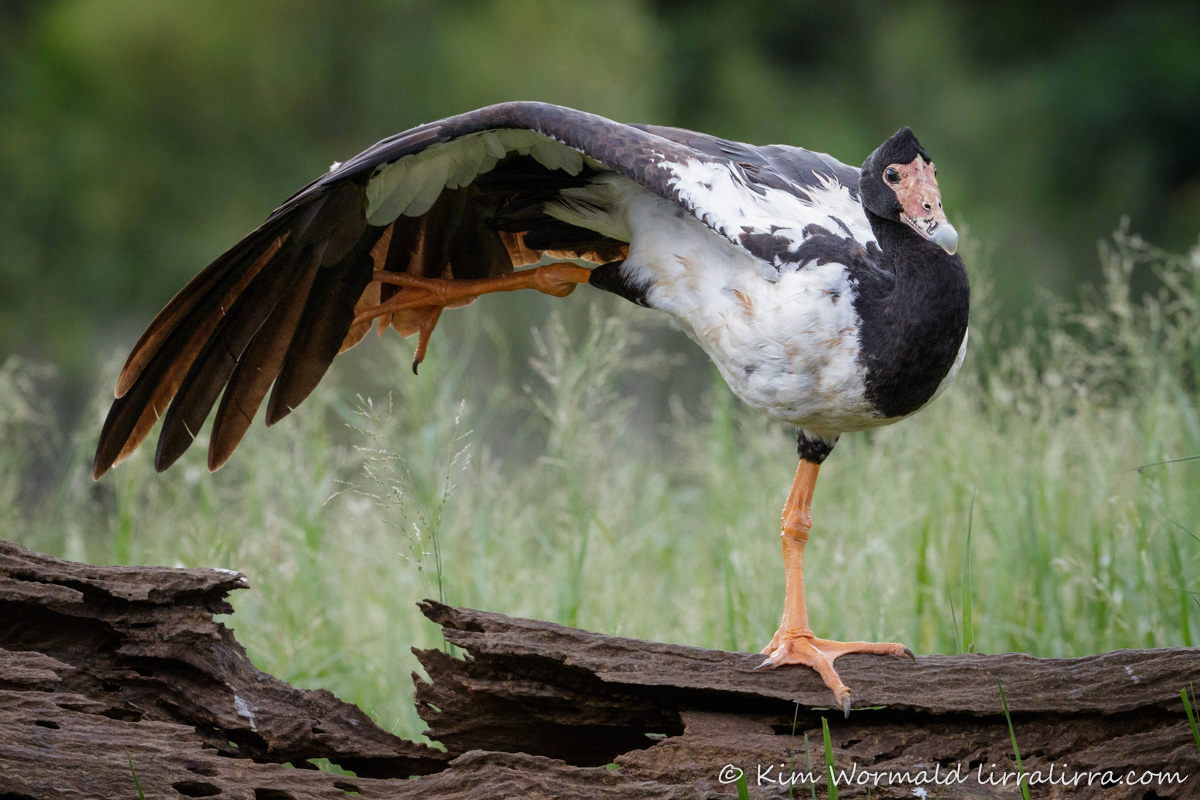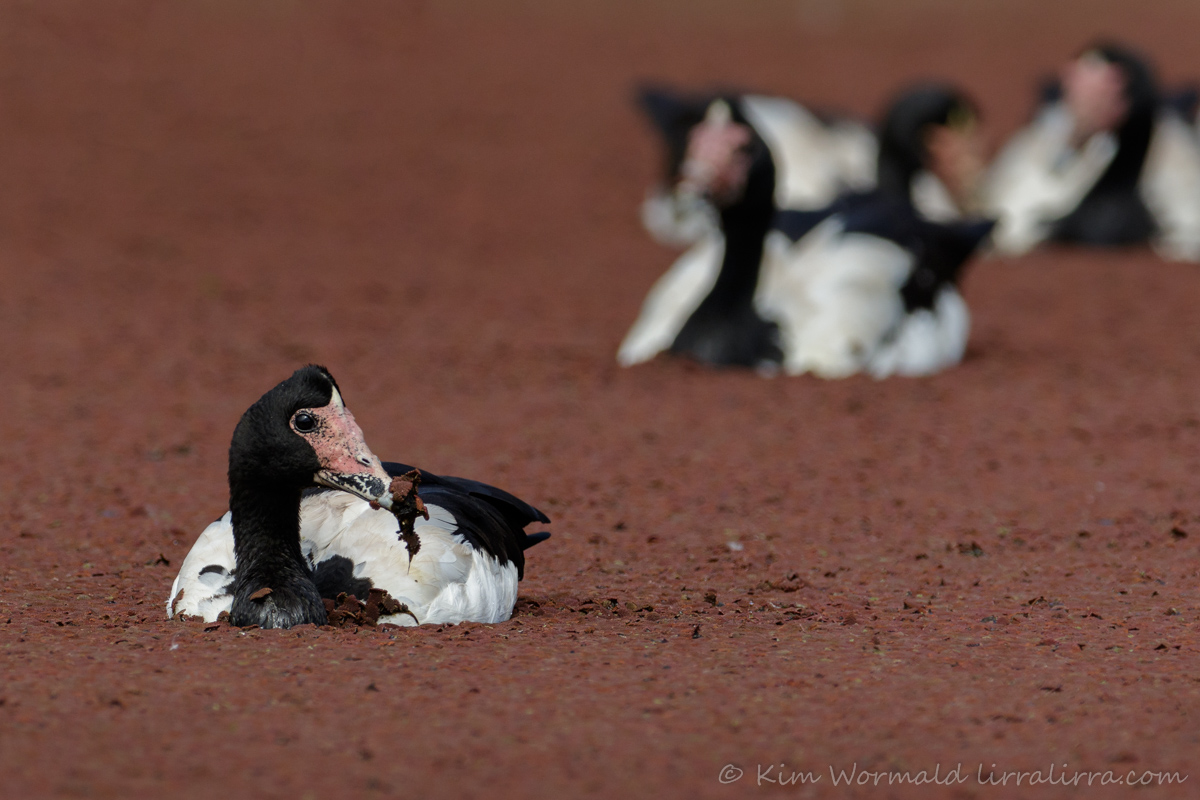The Hunter Valley Wetlands were hot, humid, mossie-ridden and beautiful, and I’d love to go back and explore the area more thoroughly.
I sat on a bank for an hour watching the Magpie Goose, above, preen and rest and then it stretched just as I was checking the histogram. So, of course I needed to sit there for another 40 minutes hoping that it would stretch again.
Magpie Geese are large birds, about 70-90cm in size with females being slightly smaller than males. Both genders have a characteristic bump on top of their heads, which is slightly smaller in females. They gather in massive flocks of several thousand birds to feed on aquatic vegetation . They differ from most other waterbirds as their feet are strongly clawed and only partly webbed, as can be seen in the image above.
It’s difficult to believe that waterbirds can swim on this sea of water-weed. Azolla is a native, aquatic fern that grows in still, or virtually still, waters. It is a remarkable plant that can double its mass in less than one week if the temperature, pH and nutrient levels are consistently good. Its leaves are small and it roots dangle about 40cm into the water. Waterbirds, fish and a range of invertebrates feed on Azolla and, by limiting the amount of sunlight that penetrates the water, it effectively suppresses the development of algal blooms. Azolla can form mats over water than are dense enough to prevent mosquitoes from breeding; I can’t imagine how many mossies there’d have been without it.
Happy birding, Kim
~ Thank you for your visit and comments.
~ If you’d like to receive a weekly email informing you that lirralirra has been updated please join the growing list of subscribers and add your email address to the ‘subscribe’ box above right.



hI, very nice blog I love it.
Thank you Alain 🙂
Great photos Kim! 🙂
Thank you Joy!
I would not have guessed that to be a goose. Such an interesting looking bird – almost vulture looking. The azolla is amazing and how cool that it grows so fast and keeps skeeters at bay! As always your photos are amazing and I love all the education I get reading your posts.
Thanks Sherry, it is a strange looking bird. Skeeters is a great word, we call the little needle-noses mossies or mozzies.
We’ve been in Far North Queensland on holidays, with some birding allowed by family . I have watched Magpie Geese in the past week excavating the loose sandy soils , digging quite large holes , looking for grubs. Our friends told me they are a pest after a good downpour, leaving holes everywhere …they still love them despite that. This was near the beach at Newell, north of Mossman on the way to Daintree, brilliant tropical country with large numbers of birds . I shared the beach each morning with a pair of WBSE , fishing like me !
Hi Paul, that sounds like a fantastic place to be, I wish I was there too! I can imagine the geese making a mess as they forage, and I’d love to be watching the WBSEs. I hope you enjoy the rest of your holiday.
Hi Kim, what a beautiful bird that is , you have certainly caught the leg lift perfectly. Great work Kim . love Dona
They are remarkable birds Dona, I’m glad you like the image 🙂
Amazing photography and fantastic blog.
Thank you Evie, I’m glad you enjoy lirralirra and I appreciate your comment 🙂
Fascinating about azolla
I thought so too 🙂
Wow they are weird creatures! That stretch is incredible!
I’d love to see that plant filmed in timelapse 🙂
Ooh, yes, I’d like to see the plant in timelapse too, it’s pretty amazing.
The choreography of that stretch is incredible.
I don’t think I have ever seen Magpie Geese – and am very grateful to view them here.
It was lovely to watch the stretch grow and grow.